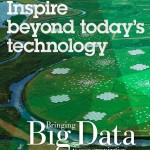Data & AI
Improving the innovation value chain: Making academic research accessible
Share this post:
A pilot project by the Flanders government to link information on public research projects with dynamic analysis of the research content itself is building for a bright future – one in which academics and businesses will soon be able to access all research in the region at the click of a mouse.
“The basic idea behind the RILOD project evolved in our department a few years ago,” explains Geert Van Grootel, Senior Researcher at the Department of Economy, Science and Innovation (EWI) for the Flemish government. “Why not build an open space where you could search all publicly available research in Flanders – both by headline data and actual research content – and then turn it all into linked, shared intelligence? The faster that information from academic research can move, the shorter the ‘innovation value chain’ – and therefore the faster that we, as a region, can realize a return on investment on our publicly funded research.”
Research Information Linked Open Data (RILOD) is part of a larger government program, known as FRIS (Flanders Research Information Space), designed to integrate information on research conducted at all Flemish universities and one university college. The technical challenges of the RILOD project promised to be huge from the outset. It would require not just the mapping and linking of the structured data already in the public domain (research project information, researchers and institutions from around the region, stored systematically in the Flemish Research Portal) but crawling and analyzing vast quantities of unstructured data too (i.e., the research content itself). “It was an experimental idea at first,” says Van Grootel. “But in a very short space of time, it’s become a reality.”
The resulting “linked open data store” (publicly accessible, albeit still in beta at the moment) provides access to a range of dynamic information on 25,000 projects, 22,000 researchers and 600,000 publications around Flanders. That includes some 200 million “triples” identified within 45,000 of the research texts by IBM’s analytics software, and intelligently correlated (a “triple” being a data entity composed of subject-predicate-object, like “results are promising” or “35 percent chose Option A”).
Crucially, because the product’s IBM analytics can not just read but interpret the text of the research studies, the technology is an intelligent resource. “So a researcher will soon be able to choose terminology, academic theories, people or topics from his research domain and see how they are being used in other research projects; expand out from that to find connections to other associated persons, projects and institutions; and then find intelligent links between key concepts within the research studies and associated publications.”
It should be a big boost to industry as well. “Businesses will be able to locate all this public knowledge without needing to understand how information in academic research is structured – because they’ll be able to use their own terminology, in simple and intelligent search tools, and all in a user-friendly interface.”
And since the underlying data store itself will remain open-source, it could spawn a range of different external applications. “We will build pre-defined visualizations in future iterations, but a private company could easily build their own interface and draw up data from the linked open data store, allowing all this great research to be exploited to its fullest potential,” says Leen Van Campe, Information Architect at EWI.
The complete technology stack has now been test-driven and the project has recently been designated by the Flemish government as a “Flemish Innovation Project” (i.e., an e-government project that drives innovation and facilitates efficiency gains for business and citizens).
The project’s primary metric – generating return on investment through an improved innovation value chain – will take time to be realized fully. But the RILOD will also benefit in the future from other FRIS projects aimed at expanding the region’s information space (which will bring in more stakeholders and more information objects) and at improving the quality on the source side of FRIS. “We honestly believe that, years from now, this is going to have proven transformational,” says Van Grootel. “What we have today is just the beginning.”
 This article is printed in the November edition of our IBM Inspire Beyond Today’s Technology magazine. Download the edition here or go to ibm.com/inspire/be to request a hard-copy version.
This article is printed in the November edition of our IBM Inspire Beyond Today’s Technology magazine. Download the edition here or go to ibm.com/inspire/be to request a hard-copy version.
Data-driven asset management with IBM Maximo Application Suite and Cloud Pak for Data
IBM has enhanced its Enterprise Asset Management platform, IBM Maximo Application Suite (MAS), with IBM Cloud Pak for Data: a supporting platform which provides a framework for combining a variety of data from different areas of an organization. How does IBM Cloud Pak for Data help organizations gain additional asset management insights from available data? […]
Being a data driven organization: What does this mean at Allianz?
Reading Time: 8 minutes From calculating risks and premiums to understanding customer behavior, data is of vital importance in the insurance business. Allianz, a multinational financial services company that focuses on insurance and asset management, has recently transformed its operations on a data level to reinvent its insurance business. Read an extract from a recent […]
How data analytics and AI push the frontiers of research for high-impact innovation at LIST
Data analytics and AI are more than just buzzwords when it comes to research and innovation. From handling big data to uncovering new insights, data analytics and AI have proven their value time and time again at LIST. Introducing LIST LIST, also known as the Luxembourg Institute of Science and Technology, is a […]



